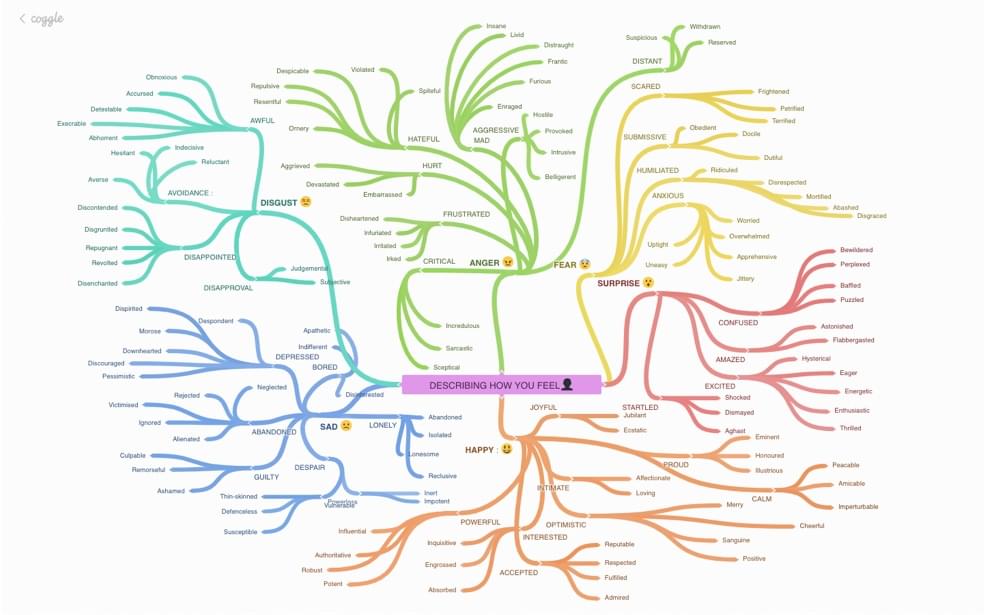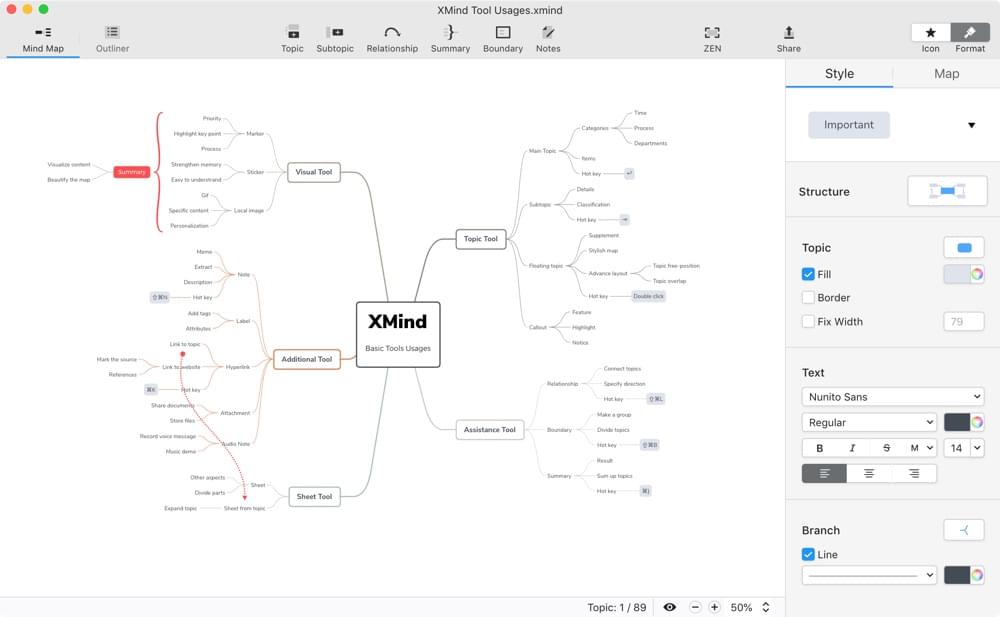
A mind map is a diagram drawn to help brainstorm ideas without being forced to organize or structure them. Instead, ideas are visually depicted in a hierarchical structure showing the flow and relationship between various ideas as they arise, which allows us to analyze them and recall them with ease.
Let’s take a look at the types of mind maps that are used in UX, and the mind mapping tools that are used to create them.
The Benefits of Mind Mapping
So, why mind map?
Ideation is exciting. Ideas here, ideas there. However, the enthusiasm to conceptualize them can be so invigorating that we don’t take the time to develop upon them or consider other ideas.
Rushing into a concept can take us down a road that’s seemingly harmless but actually quite dangerous. It might get us to finish line, which feels great, but with an end-result that’s mashup of random thoughts and ideas that don’t work together.
By mapping out ideas, we can better understand their:
- value (what’s to be gained by exploring this idea?)
- role (how does the idea fit into the bigger picture?)
- relationships (how does the idea relate to other ideas?)
Eventually we can start to organize these ideas by similarity using a methodology called affinity mapping, which in turn helps us design user-centric mockups and wireframes as opposed to being driven by personal opinion.
How Mind Maps Are Used in UX
Mind maps can evolve into other types of maps with more specific uses. For example, maps that explore the navigational hierarchy and user flows of software systems such as websites, apps, and so on, are referred to as sitemaps. Maps that explore the numerous ways in which customers might interact with a product are called customer journey maps.
Both of these are useful when planning UX design projects — sitemaps for planning wireframes, and customer journey maps for optimizing the online and offline customer experience.
Coggle
- Pricing: $0, $5, or $8 (/month)
- Platform: web
- Pros: simple features, real-time collaboration
- Cons: looks a tad outdated, only accomplishes mind mapping
While many old-school mind mapping tools have become tragically outdated over the years, Coggle is one that’s managed to survive by keeping its focus solely on mind mapping and sporting a fairly simple user interface.

It still looks somewhat dated, but nonetheless is much better looking than veteran tools like FreeMind (which hasn’t been updated in at least four years) and Mind Manager (which looks like it came bundled with Windows 95).
Check out the Coggle Mind Map Gallery, especially the mind map that describes the various types of emotion.
Notice how each emotion is divided by color, then further divided into more specific emotions depicted with capital letters, and then divided once more in a smaller font. It’s totally up to you how visually organize your thoughts and relationships. Coggle lets us explore ideas using images, branches, loops, shapes, and whatever else we need to explore our story.
Stakeholders can weigh in by commenting on mind maps, but also collaborate in real time as if using a whiteboard.
Apart from real-time collaboration, these features are standard and are included in every other tool in this list.
TL;DR: Coggle is everything you need, and nothing you don’t.
XMind
- Pricing: $1.24, $4.58, or $4.99 (/month)
- Platform: web, iOS, Android, macOS, Linux, Windows
- Pros: beautiful maps, very modern, excellent UX
- Cons: only mind mapping, no real-time collaboration
Other than Coggle, XMind is the only mind mapping tool to withstand the test of time, these days taking inspiration from critically acclaimed screen design tools like Sketch to offer a mighty mind mapping experience, but still with a minimalist and intuitive user interface. XMind mind maps look stunning, and while there’s no real-time collaboration, the maps can be shared with stakeholders and exported in a variety of formats.

If you’re looking for a modern-looking mind mapping tool without the bells and whistles, XMind is more than suitable.
Tip: try “Zen Mode” to remove all UI distractions!
The post The 9 Best Mind Mapping Tools for Designers appeared first on SitePoint.
No comments:
Post a Comment